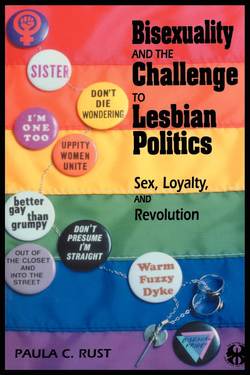Читать книгу Bisexuality and the Challenge to Lesbian Politics - Paula C Rust - Страница 21
На сайте Литреса книга снята с продажи.
How LESBIAN AND BISEXUAL WOMEN WERE RECRUITED TO PARTICIPATE IN THE STUDY
ОглавлениеIn order to obtain as diverse a sample as possible, I used sampling methods designed to ensure the inclusion of women who were most likely to be undersampled. Women at risk of being undersampled included closeted women, geographically isolated women, and women who were not socially or politically active in lesbian or bisexual community organizations and events. Because of their social and physical isolation, these women would be less likely to hear about the survey and because of their closetedness or reclusiveness they would be less likely to participate even if they did hear about it. Older women, poor women, and nonstudents were also at risk of underrepresentation because they are less likely to be socially and politically active. Bisexual-identified women were more difficult to reach than lesbian-identified women because there are comparatively few organizations for bisexual women; most bisexual women had to be recruited through primarily lesbian networks. Finally, Women of Color have been underrepresented in previous research on lesbians. This is partly because most researchers are White Euro-Americans themselves, and therefore tend to focus on issues that are of interest to White Euro-Americans or fail to publicize their research in a way that welcomes participation from Women of Color as well as White women.
To overcome the bias against closeted women, geographically isolated women, and women who were not actively involved in lesbian/bisexual community events, I used a self-administered questionnaire2 instead of the face-to-face interview or ethnographic methods that have usually been used to study lesbian and bisexual women. The questionnaire was distributed with postage-paid return envelopes so that respondents could return their completed questionnaires anonymously and at no financial cost to themselves. The goals of the survey were described on the cover of the questionnaire and the instructions inside the front cover and throughout the questionnaire were self-explanatory, thus eliminating the need for potential respondents to speak directly to a member of the survey staff before participating in the study. This enabled the questionnaire to be passed from one woman to another until it reached an eligible respondent, and allowed the questionnaire to reach socially peripheral lesbian and bisexual women and women whose fear of discovery might otherwise have prevented them from participating in the study. The success of these efforts to maximize the mobility of the questionnaire is evident in the fact that, although the target geographic area was a single midwestern state and 98% of the questionnaires were initially distributed in that state, completed questionnaires were returned from respondents in 24 states and Canada.
Six assistants who had conducted interviews in earlier stages of the study helped distribute the questionnaire. These assistants varied in age, political orientation, and sexual identity. They therefore had access to different segments of the lesbian and bisexual population, and were able to recruit a more diverse sample than I could have alone. Questionnaires were distributed by several methods, including booths at gay, lesbian, and women’s conferences and through gay, bisexual, and lesbian social and political organizations, friendship networks, and newsletter advertisements. Particular efforts were made to contact bisexual organizations and organizations for lesbian and bisexual Women of Color, and to recruit Women of Color who belonged to predominantly White Euro-American organizations. Potential respondents were encouraged to take multiple copies of the questionnaire to distribute among their own friends and the members of other organizations to which they belonged. Calculation of an accurate response rate is impossible because some questionnaires probably never reached eligible respondents and some probably passed through the hands of eligible nonrespondents before reaching a respondent. However, 427 usable questionnaires were returned, representing a response rate of approximately 45% based on the number of questionnaires that left my hands.
